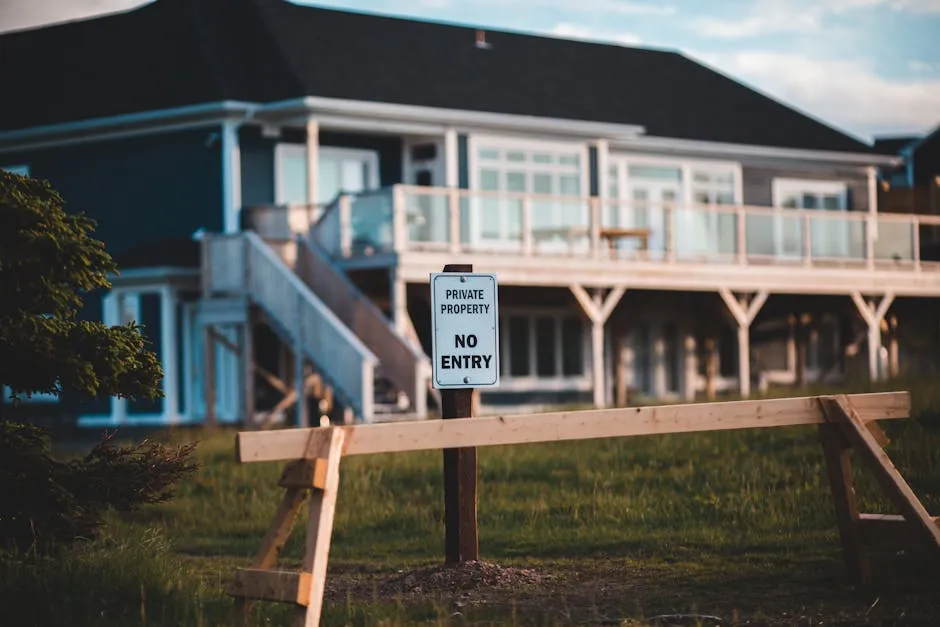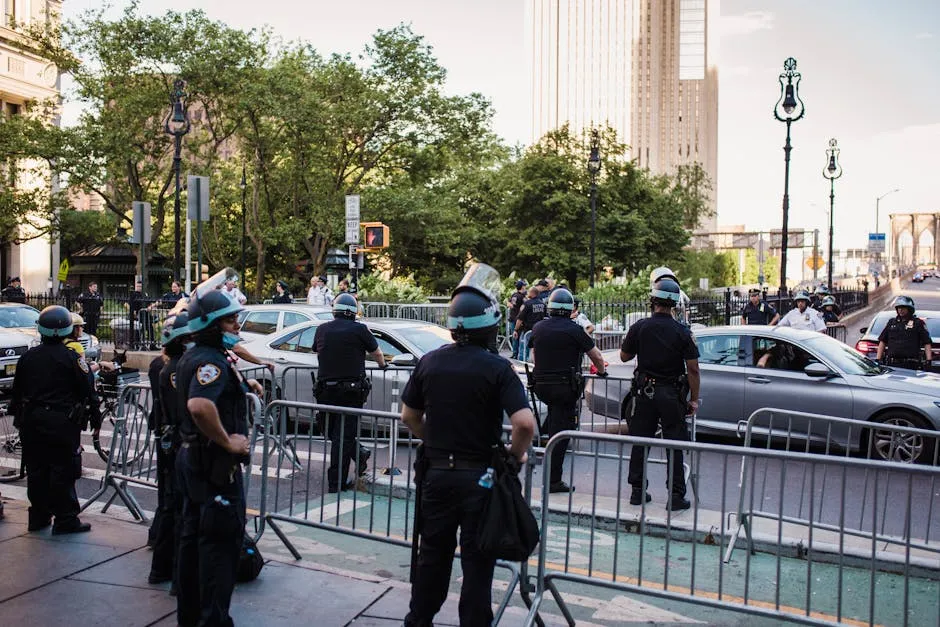Introduction
Everett, Washington, is a vibrant city located about 30 miles north of Seattle. Nestled along the beautiful Puget Sound, it boasts a population of approximately 111,337 residents. Known for its rich history and diverse community, Everett has become a popular place to live and work. However, like many urban areas, it faces challenges related to crime.
Understanding crime statistics is essential. This article aims to analyze crime statistics in Everett, comparing them to state and national averages. We’ll also explore how these figures relate to community perceptions of safety.
For residents, potential movers, and policymakers, grasping the realities of crime in Everett is crucial. Crime data informs decisions about where to live, how to enhance safety, and what resources communities might need. As we unpack the statistics, you’ll gain valuable insights into the safety landscape of Everett, helping to navigate this bustling city more confidently.
Speaking of safety, a reliable Home Security System can be a game changer for peace of mind. Imagine knowing that your home is well-protected while you’re away, allowing you to focus on your daily life without constant worry!

Understanding Crime Statistics
What Are Crime Statistics?
Crime statistics are numerical representations of reported criminal activities in a specific area. They help identify trends and patterns, providing essential data for urban planning and community safety. These statistics inform law enforcement, policymakers, and citizens about the prevalence of crime and its impact on communities.
Crime rates are calculated by dividing the number of reported crimes by the total population, typically expressed per 1,000 residents. For example, if a city has 100 crimes reported and a population of 10,000, the crime rate would be 10 per 1,000 residents. This standardized approach allows for fair comparisons across different regions and time periods.
Sources of Crime Data
The primary sources of crime data include the FBI’s Uniform Crime Reporting (UCR) Program and local law enforcement agencies. The UCR collects data from thousands of police departments, providing a comprehensive view of crime across the United States. Local agencies also contribute their data, ensuring accuracy and relevance to specific communities.
Platforms like NeighborhoodScout and AreaVibes aggregate data from various sources, utilizing advanced methodologies to create detailed crime risk profiles. They analyze factors such as population density, socioeconomic conditions, and historical crime trends to present a clearer picture of crime in specific areas. By harnessing these diverse data sources, we can understand crime statistics better and their implications for communities like Everett.
By comprehending crime statistics, residents can make informed decisions about their safety and the communities they choose to live in. This knowledge also empowers local authorities to allocate resources effectively and implement targeted crime prevention strategies. For more on how statistics can guide informed decisions, check out this article on statistics informed decisions using data.

Understanding crime statistics can help residents make informed decisions about their safety and community. Statistics informed decisions using data provides deeper insights.
Overview of Crime in Everett
General Crime Rate
Everett, WA, is a city where crime rates raise eyebrows, to say the least. With a total crime rate of 48 per 1,000 residents, it’s like living in a city that’s constantly auditioning for a role in a crime drama. The implication? Residents face a 1 in 21 chance of becoming a victim of either violent or property crime. Yes, you read that right! It’s like playing a game of roulette, but the stakes are a bit higher than you’d want.
When we compare these statistics to national averages, Everett’s crime rate stands out. Over 89% of communities in Washington have lower crime rates. So, if you’re planning to move here, consider keeping your windows locked and your wits about you. And while you’re at it, a Smart Security Camera might just be your best friend in keeping an eye on things.

Violent Crime Statistics
Now, let’s talk about the big stuff: violent crime. In Everett, the statistics are concerning. The city recorded 12 murders last year, translating to a rate of roughly 0.11 per 1,000 residents. That might not sound like much until you realize it’s part of a larger picture.
– Murder: 12 total, 0.11 per 1,000 residents
– Rape: 54 incidents, about 0.49 per 1,000 residents
– Robbery: 110 occurrences, approximately 0.99 per 1,000 residents
– Assault: 314 cases, which amounts to 2.82 per 1,000 residents
Now, let’s put these numbers into perspective. Everett’s violent crime rate of 4.4 per 1,000 residents is noticeably higher than the Washington state average of 3.76 and the national median of 4.0. It’s a stark reminder that while the city has its charms, the streets can be unpredictable. For those interested in understanding the broader context of assault statistics, consider exploring campus sexual assault statistics.

The statistics surrounding violent crime in Everett highlight the importance of understanding broader issues. Campus sexual assault statistics provide valuable insights into violence trends.
Property Crime Statistics
When it comes to property crime, Everett doesn’t shy away either. The city recorded a staggering 4,816 property crimes last year, leading to a property crime rate of 43.26 per 1,000 residents. Here’s how it breaks down:
– Burglary: 738 incidents, roughly 6.63 per 1,000 residents
– Theft: 3,082 occurrences, translating to about 27.67 per 1,000 residents
– Motor Vehicle Theft: 996 cases, or 8.93 per 1,000 residents
With these numbers, residents face a 1 in 23 chance of becoming a victim of property crime. Comparatively, Everett’s property crime rates are alarmingly higher than the Washington state average of 33.56 and the national median of 20.0. This paints a vivid picture of the crime landscape, highlighting the need for awareness and community vigilance.
To combat property crime, consider installing Motion Sensor Outdoor Lights. They illuminate your property and deter any potential intruders lurking in the shadows. It’s like having your personal security team—without the hefty salary!

Community Safety Insights
The implications of these crime statistics are clear: community safety is a pressing concern in Everett. While the city is rich in culture and offers beautiful views of Puget Sound, it’s essential for residents to be proactive about their safety. Neighborhood watch programs, increased police presence, and community engagement can help mitigate these risks. Understanding these numbers isn’t just about fear; it’s about empowerment. The more informed you are, the better equipped you’ll be to navigate the streets of Everett safely.

Recent Trends in Crime Rates
Everett’s crime statistics tell a story. When we analyze the year-over-year data, a few key trends emerge. Last year, crime rates jumped by 8.1%. That’s not just a small hiccup; it’s a noticeable increase. Violent crime saw a whopping 38% rise, while property crime went up by about 5.8%. These numbers can be alarming, especially for residents who want to feel secure in their community.
What’s causing these trends? Well, several factors may be at play. Economic conditions certainly play a role. With rising costs of living, some residents face financial strain, potentially leading to an uptick in crime. Furthermore, the city’s population density may contribute to higher crime rates. More people can mean more opportunities for crime.
Law enforcement practices are also crucial. The effectiveness of policing can impact crime trends. If residents feel police are visible and responsive, they may feel safer. However, if they perceive police as ineffective, it can lead to increased fear and even more crime.

Comparisons with Nearby Cities
Comparing crime rates in Everett to nearby cities reveals a striking picture. Let’s take a look at Lynnwood and Mukilteo. Everett’s overall crime rate is significantly higher than both. While Lynnwood has a crime rate of about 408 per 100,000 residents, Mukilteo is much lower at around 153 per 100,000.
This paints a clear picture: Everett is not exactly the safest option among its neighbors. Within Everett itself, certain neighborhoods shine brighter in terms of safety. For example, areas like Seattle Hill and Silver Firs boast lower crime rates. On the flip side, neighborhoods near the city center, such as Glacier View and Everett Mall South, show higher crime rates, making them less desirable for those prioritizing safety.
Residents should keep these comparisons in mind. Understanding the crime landscape can help them make informed choices about where to live, work, and play. And while you’re at it, don’t forget about securing your home with a Deadbolt Lock. It’s a small investment for a big peace of mind!

Community Perspectives
Public Perception of Safety
When it comes to public perception, surveys reveal a mixed bag. According to a recent survey, only 24% of residents feel safe walking alone at night. That’s a sobering statistic! Meanwhile, 76% of respondents express concerns about safety in Everett. It’s clear that many residents are uneasy about their surroundings, which can affect community morale.
Community engagement plays a vital role in shaping these perceptions. When neighbors connect, they create a support network that can foster feelings of safety. Neighborhood watch programs and community events can help bridge the gap, making residents feel united against crime. For a fun way to engage your community, consider a Community Engagement Board Game. It’s a great way to bring neighbors together!

Law Enforcement and Community Initiatives
Local law enforcement is crucial in addressing crime. Everett police have made strides through community initiatives aimed at reducing crime. Collaboration with organizations and residents fosters trust and transparency. Programs focusing on outreach and education help residents feel more secure.
For instance, the police department often partners with community organizations to host safety workshops. These initiatives empower residents to take an active role in their safety. Additionally, increased police presence in high-crime areas helps deter criminal activity.
By working together, law enforcement and community members can create a safer environment. This collaborative approach not only reduces crime but also enhances the overall quality of life in Everett. As residents engage more with local initiatives, they help shape a community that values safety and support. And if you want to be prepared for emergencies, consider creating a First Aid Kit for your home!

Noteworthy Crime Insights
Specific Crime Issues
Everett faces some unique crime challenges, particularly concerning motor vehicle theft. With a staggering rate of 8.93 per 1,000 residents, the chance of your car becoming a target is about 1 in 112. Yes, you read that correctly—if you’re driving around Everett, keep an eye on your keys!
But the story doesn’t end there. Local socioeconomic factors play a significant role in these crime trends. A high cost of living, coupled with economic strain, can push some individuals toward crime as a means of survival. With the median home price hovering around $359,900, it’s no wonder that some residents might feel the pinch. This financial pressure could lead to an increase in property crimes, including theft and burglary, as individuals seek quick solutions to their economic woes.

Additionally, factors such as population density contribute to higher crime rates. More people in a confined space often lead to more opportunities for crime. It’s a classic case of too many fish in a tiny pond—some fish may just get a bit too desperate. To protect your vehicle, consider investing in a Car Steering Wheel Lock. It’s an extra layer of protection against theft!
Crime Prevention Strategies
So, what can residents do to enhance their personal safety and protect their property? There are several strategies worth considering.
First, securing your home is a must. Simple actions like installing deadbolts, security cameras, and motion-sensor lights can make a significant difference. Investing in a quality Home Surveillance System is also an option. After all, it’s better to be safe than sorry, right?
Next up, community engagement is key. Neighborhood watch programs are a fantastic way to foster a sense of camaraderie among residents. They not only help keep an eye on suspicious activities but also cultivate a spirit of cooperation and trust. When neighbors look out for one another, crime rates tend to decline.
Community policing also plays a vital role in crime prevention. When local law enforcement works closely with residents, it builds mutual trust. Police presence in neighborhoods can deter criminal activity and reassure residents. Engaging with local police through community events can make a world of difference.

In summary, while Everett has its fair share of crime challenges, residents can take proactive steps to enhance safety. By investing in home security and participating in community initiatives, you can help create a safer environment for everyone. And don’t forget to have a Home Safety Checklist handy to ensure everything is in order!

FAQs
What is the overall crime rate in Everett, WA?
Everett, WA, has a total crime rate of 48 per 1,000 residents, which is considerably higher than the national average. This statistic means residents face a 1 in 21 chance of becoming a victim of either violent or property crime. In fact, over 89% of communities in Washington have a lower crime rate than Everett. So, if you’re thinking of moving here, keep your windows locked and your emergency contacts handy!
How safe is Everett compared to other cities in Washington?
When stacking Everett against other cities in Washington, it’s like comparing apples to oranges—but the apples are a bit bruised! Everett’s violent crime rate of 4.4 per 1,000 residents is notably higher than the Washington state average of 3.76. In short, Everett ranks lower in safety compared to its neighbors like Mukilteo, where crime rates are significantly lower. If you enjoy a peaceful stroll without the feeling of being in a crime thriller, you might want to consider those nearby alternatives.
What can residents do to improve safety in their neighborhoods?
Residents can take simple yet effective steps to enhance safety. First, securing homes is vital. Installing deadbolts and security cameras can deter potential intruders. Joining or starting a neighborhood watch program fosters community spirit and vigilance. Regularly communicating with neighbors about suspicious activities can build a supportive network. Additionally, attending community safety meetings can keep everyone informed about local crime trends and prevention strategies. Remember, safety is a team effort!
Are there areas in Everett that are safer than others?
Absolutely! Everett has neighborhoods that shine in terms of safety. Areas like Seattle Hill and Silver Firs report lower crime rates, making them more desirable for families and individuals prioritizing safety. Conversely, neighborhoods closer to the city center, such as Glacier View and Everett Mall South, tend to have higher crime rates. If you’re looking to move, it’s worth investigating these neighborhoods and choosing wisely!
How does law enforcement respond to crime in Everett?
Public perception of law enforcement in Everett is a mixed bag. While some residents feel police are visible and responsive, others express concern about response times. According to surveys, 35% of residents believe police presence is adequate, while nearly 30% think they could be quicker to respond. Collaborative community initiatives, such as safety workshops, help bridge the gap between residents and law enforcement, fostering trust and transparency. Engaging with local police through community events can make a significant difference in how safe residents feel.
Please let us know what you think about our content by leaving a comment down below!
Thank you for reading till here 🙂
All images from Pexels




